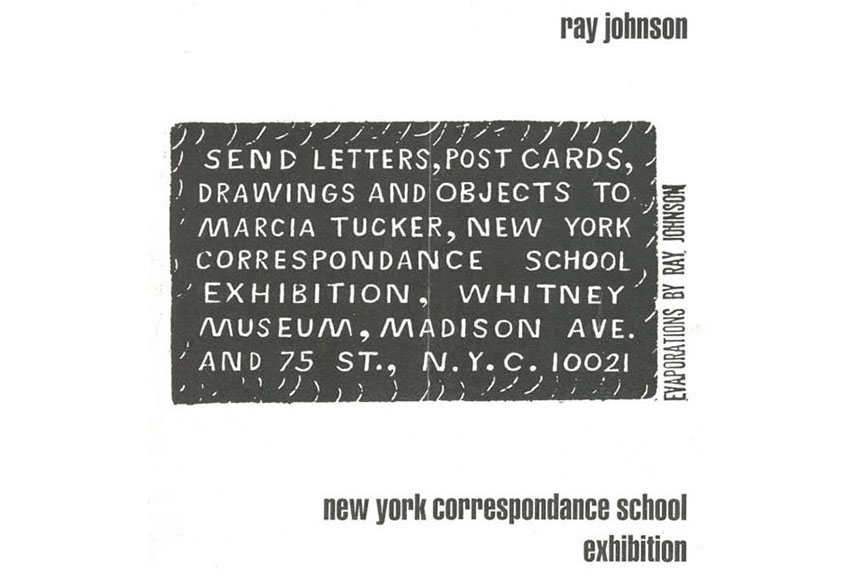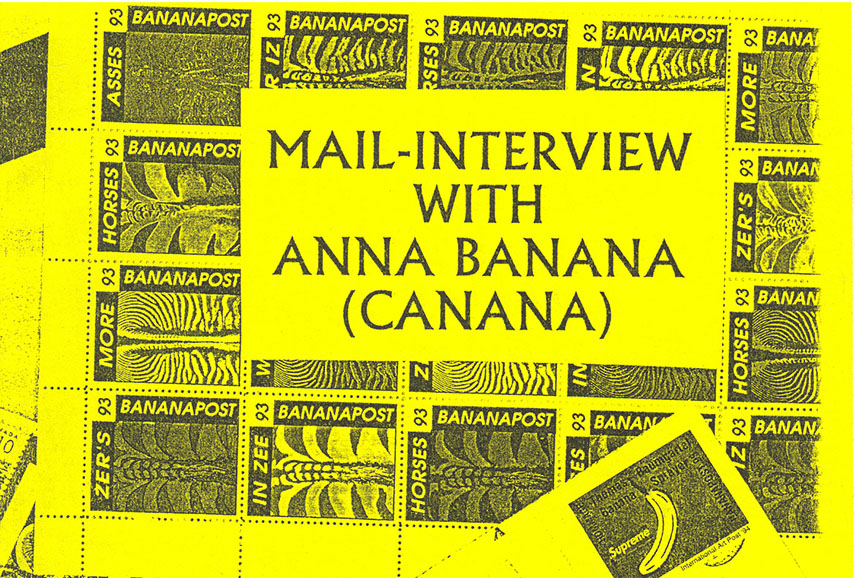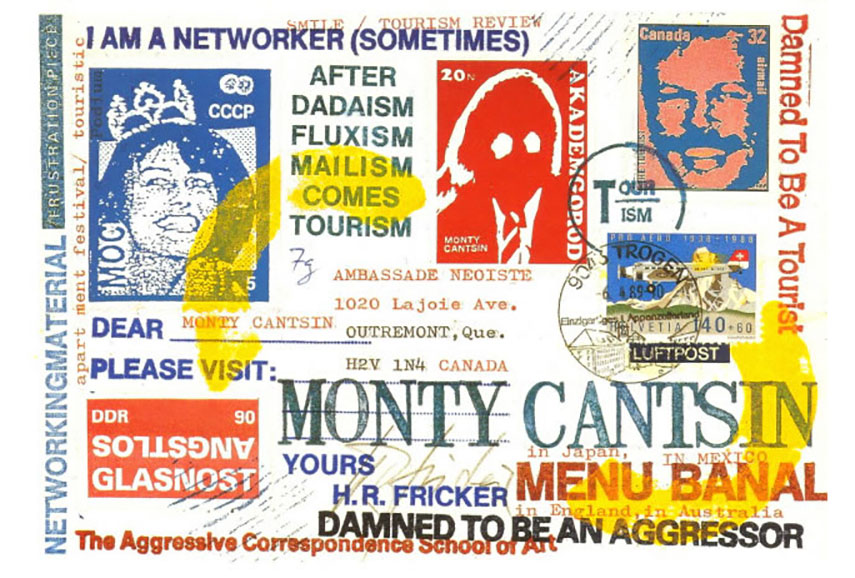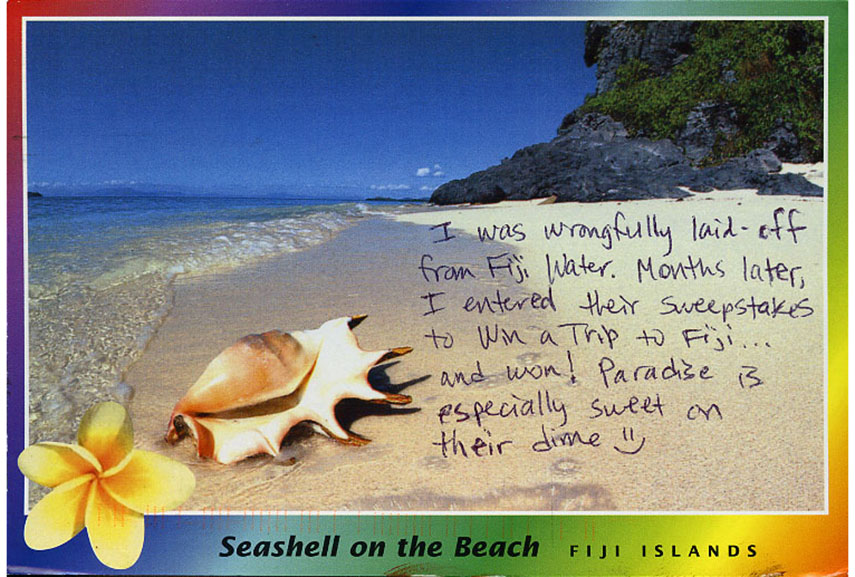How Did Mail Art Develop into a Global Art Movement ?
Through September 25th, 2016, London’s Whitechapel Gallery is hosting an exhibition called Imprint 93, titled after a mail art project initiated by curator Matthew Higgs in the early 90’s. Iconic artists like Jeremy Deller, Martin Creed, Peter Doig, Chris Ofili and Fiona Banner all have artworks on view, celebrating and contributing to the populist art movement that rose to prominence some thirty years prior.
Although Ed Plunkett, one of its members, once said that mail art probably began when Cleopatra delivered herself to Julius Caesar in a rolled-up carpet[1], its real roots can be traced to a much later period - in the groundbreaking pieces of one Marcel Duchamp and the practices of the Italian Futurists from the early 20th century.
The truth is that artworks had been traveling through envelopes all the time, from Van Gogh’s drawings of painting ideas sent to his brother Theo to Egon Schiele’s letters from his short stay in Vienna, but it wasn’t until the 1950s that someone finally decided to give this creative process some proper credit and proclaim it a true artistic movement.

What is Post Art ?
To describe the phenomenon of Post or Mail art, also known as Correspondence art or Postal art, one could say that it represents any form of the arts created meant to be sent through postage service[2], or better yet: works that are only big enough to be put in envelopes and posted away. This movement was particular in many aspects, perceived as a kind of activity shared by many people - or anyone interested - around the world. As such, it diverged from the structures of the commercial art market and traditional venues and institutions such as galleries and museums; rather, it was meant to be an aesthetical communication and interaction with a few guiding rules. Artists would send their artwork by post to the person of their choice, who would then have the complete freedom to decide whether to receive and/or to respond to the piece of the incoming post. Many of these artworks were often a result of a group project and were put in exhibitions without any kind of jury, censorship or admission criteria, at first only in alternative spaces such as private apartments, shop windows and municipal buildings. The idea of the founders and the members of Mail art movement was to create a global community, through post as a mass medium, putting an emphasis on the act of exchange and collaboration, free of barriers like language, ideology and religion.

“Mail Art has no History, Only a Present”
In 1943, an artist by the name of Ray Johnson began experimenting with correspondence art by embellishing envelopes in Detroit, while an artistic group called Nouveau Réalisme used letters and rubber stamps in their conceptualism[4]. By the time Johnson, who later turned out to be the pivotal figure for the postal art movement, saw the creative potential of postage, another group of artists appeared on the scene. Embarked on a journey without an idea (or the need) of an end, Fluxus recognized its visions in mail art’s fusion of performance and collage-making and embraced it all. In particular, artist Robert Filliou often used envelopes and paper in his practice and was recognized by founder George Maciunas for it, although other Fluxus names like Robert Watts and Ben Vautier also used postage items such as stamps and postcards. Yet the real recognition of postal art as a concept of its own came with the development of The New York Correspondence School in 1962.
Mail Art made by Ray Johnson
The New York Correspondence School
The New York Correspondence School was a term coined by the aforementioned Ed Plunkett, who used it to describe Ray Johnson’s activities. Johnson, in return, accepted the moniker, although he sometimes intentionally misspelled it as “correspondance”, thus evoking the free, playful spirit of the movement and its participants. The Correspondence School institutionalized the free exchange of postal messages among mail art artists and audience. It also encouraged meetings of its members, which were a big part of the School’s “program”, because for him it was all about interaction with a good sense of humor. Ray Johnson often highlighted mail art’s ability to convey a non-verbal, non-confrontational message which connects the involved parties in its absence, where ”an object is opened in privacy, probably, and the message is looked at”[5].
Although mailed artworks escaped the influences of the art world, they were still sometimes exhibited in major museums and galleries. Such is the case with the 1970 show which took place at the Whitney Museum of American Art in New York City. Organized by Ray Johnson and Marcia Tucker, it was the first time that the postal pieces went on display, and within the walls of such a great institution too. Similarly, these artworks nevertheless attracted a great number of librarians, archive managers and collectors as well, despite (or perhaps fuelled by) the fact that the Correspondence School closed in 1973. They were small and they were always inside envelopes, but they were works of art either way, with a strong concept behind it.

Towards the New Millennium
Ray Johnson continued to practice mail art after the closing of his School, and so did many other creatives and enthusiasts around the world. The fact that it was cheap and flexible made the movement accessible to many, particularly those within communities encountering censorship and the inability to express their opinions and ideas. Johnson’s mission to endorse meetings influenced the birth of many festivals and conventions on a large scale, which took place in the United States in the early 1980s, for instance. Another exhibition of correspondence art was held in New York in 1984, although it was followed by a controversy regarding the fact not all submitted artworks were shown - something which was generally accepted within the movement, as we’ve seen earlier. This didn’t stop the expansion of the ideology behind it all, and mail art became common sight in Europe, the Americas and Australia, with rising interest in Asia and Africa as well. In the 1990s, the mail-interviews by Dutch artist Ruud Janssen were the movement’s great and perhaps last contributions of sorts, as artists turned to the wonders and possibilities of the web which allowed the creation of digital communication. However, the influence of mail art on the Internet at large can be examined on a much more conceptual level.

To Envelope Art - Media Used by Correspondence Artists
Just like anyone can take part in the making of mail art, the choice of the materials is vast and versatile too. Because of their accessibility in terms of production and price alike, items like paper and techniques like painting and collage provided the participants with a great number of opportunities to express themselves - and it is interesting to see the ways they were, and are able to turn a “plain” concept of letter and envelope into a true piece of art.
Decorated Envelopes
In a way, envelopes represent the “packaging” of the postal artwork, although many focused more on their aesthetics rather than on what’s inside them. The hand-written address becomes a part of the piece, and is often surrounded by painted or drawn elements as well as stitching, embossing and all kinds of designs. This way, envelopes become their own artwork and on many occasions they get delivered without any accompanying content. The most famous project in this field is The Graceful Envelope, which has been running since 1995 and has had the annual theme every year. In Washington D.C., the selected envelopes even go on view as part of renowned exhibitions.

Artistamps and Rubberstamps
An important part of a postage item is the stamp, and mail art was the perfect opportunity for individuals to create their own designs. These pieces go by the names of artistamps, postoids, faux postage and even cinderella, inspired by those used by the Fluxus creatives. Artistamps also became a part of a sub-network, formed by those who were exchanging their own stamps and stamp sheets; an example of such practice is Jerry Dreva and his conceptual group Les Petits Bonbons. Rubberstamps, on the other hand, were officially used for franking mail, but their designs were radically changed to fit the needs of Postal art makers. Many of them created trademark designs which helped the recipient recognize their work easily, and functioned as a sort of an artist signature.

Postcards
Apart from envelope and paper, another and perhaps the most popular form of mail art has to be the postcards. There is no packaging, just a piece of surface waiting to be altered, edited and designed. Postcards are sent quickly and easily, and interestingly enough even the postage costs less than regular envelopes, which makes it even more accessible and wanted by the correspondence artists. Those interested in sending postcards can join Post Secret, a project that’s been running since 2005 that invites the participants to send an anonymous postcard with a secret written on it, which is then published online and in one of their many books.

Lettering and Other Media
When it comes to what goes inside the envelopes, there are many, many possibilities. Starting from the writing paper, many mail creators use printing and copying as a method of mass distribution; this is where Copy art, in particular xerography and photocopy, take the stage. With the advent of computers, mail artworks got inkjet and laser printouts as well. Naturally, media like photography, collage and photomontage, recycled images, found objects, even sounds, poetry, artist trading cards and other envelope-fitting items (like banknotes, badges, stickers, tickets, food packaging, maps, diagrams and smaller books) are also integral to the practice. On the other hand, lettering in both handwritten and printed form is still considered the most important part by many, as it carries the word in its many forms, be it literature, recordings, poetry and prose, as well as translations.

(E-)Mail Art - Does it Exist Today?
Democratic and participatory, yet personal and expressive, postal art has been connecting people for more than five decades. Today, there are a few projects continuing the legacy, such as Mail Me Art, which resulted in several exhibitions as well, or Mail Art Projects, maintained by the members of Ruud Janssen’s IUOMA. The most prominent institution dedicated to the movement is probably The Electronic Museum of Mail Art, which has several galleries of artworks and a small collection of artistamps by various names. As we can see, postal art did not give in to the dominating digital era, but rather expanded into its field. The concept of an indirect relationship that the participants form over a mailed work of art is still very much alive and well, and the post-internet tendencies only seem to have contributed to the evolution of the written word, with electronic mailing and countless online communities. The mail art movement can be seen as the anticipator of the cyber communities founded on the Internet today because of its spirit and the idea of creating virtual groups of people bonding over a common interest. Nevertheless, many still prefer the printed matter, which is why mail art is bound to exist in its original context as long as there’s paper and creativity.
Editors’ Tip: Mail Me Art: Going Postal with the World's Best Illustrators and Designers
Mail Me Art began with an idea. It became a community. But it doesn't end there. The book features 200 of the best pieces of mail art from the project, showcasing the variety and depth of the international illustration community, as well as interviews with 17 of the people that give insight into the work and the spirit of the project. Open this book, experience the array of mail art illustration, and become part of the journey.
Sources:
- Anonymous, Mail Art, Wikipedia [August 24, 2016]
- Vollrath, L. (2006), What is Mail Art?, Go Make Something [August 24, 2016]
- Parmesani, L. (1997), L’Arte Del Secolo - Movimenti, teorie, scuole e tendenze 1900-2000, Skira
- Block, M., A Brief History of Postal Art, PanModern [August 24, 2016]
- Feschi, S. (1968), Oral history interview with Ray Johnson, 1968 Apr. 17, Archives of American Art, Smithsonian Institution, Archives of American Art [August 24, 2016]
Featured images in slider: Installation view of "Ray and Bob Box" at Esopus Space, 2011. Copyright Esopus Foundation Ltd, Artworks copyright Estate of Ray Johnson; George Maciunas Fluxpost ("smile" stamps), 1977-78, Courtesy the Artist Website; Please Add To and Return To: Mail Art Homage to Ray Johnson,’ 2015, installation view. Courtesy Printed Matter, Performa and The Ray Johnson Estate at Richard L. Feigen & Co.; Mail art by Chuck Welch, aka CrackerJack Kid, 2010; An example of rubberstamps, courtesy IUOMA; Walead Beshty - FedEx Golf-Bag Box 2010 FedEx 163166 REV 10/10, Standard Overnight, Los Angeles-Miami trk#797200539928, November 20-21, 2013, 2012. Thomas Dane Gallery. All images used for illustrative purposes only.
Can We Help?
Have a question or a technical issue? Want to learn more about our services to art dealers? Let us know and you'll hear from us within the next 24 hours.

